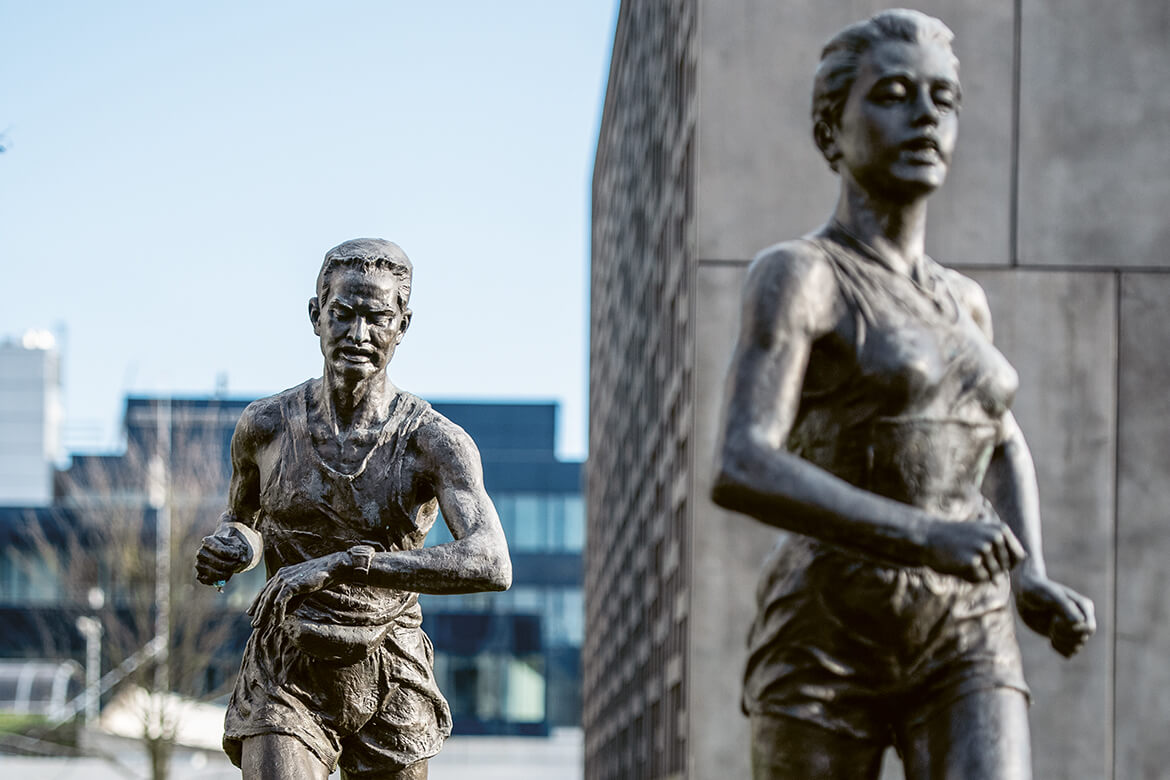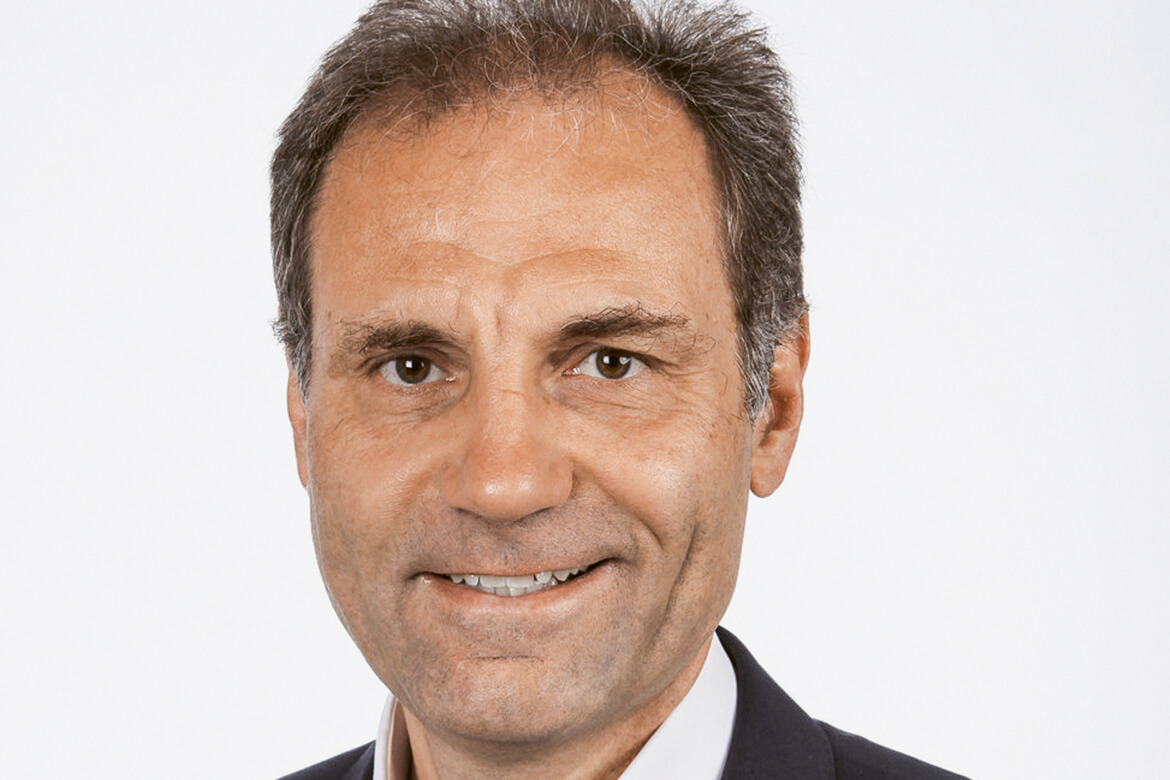Enter the professionals
Volunteer work is popular in Switzerland. It’s home to some 19,000 sports clubs, and 86 sports federations are registered with the umbrella organisation ‘Swiss Olympic’. They rely on the work of volunteers at every level. But recent years have seen an increasing trend towards professionalisation. Sports sociologists have now been investigating this phenomenon for the first-ever time, its causes and consequences.

Switzerland, the capital of world sports. The Maison du Sport International in Lausanne is home to some 30 international federations and organisations. | Image: Valérie Chételat
Roughly a quarter of the Swiss population aged between five and 74 is active in a sports club. That’s some two million people. This figure has remained stable since the mid-1990s, but over the same period there has been a noticeable trend towards the professionalisation of sports clubs. For example, the proportion of paid work undertaken, calculated as a percentage of the total work involved, rose from 10 to 20 percent between 1996 and 2010. And since 2016 it has evened out at roughly 16 percent, as the Swiss Observatory for Sport and Physical Activity has proven in its recent study of sports federations.
For the first-ever time, a research team from the universities of Lausanne and Bern has investigated the professionalisation of national and international sports federations in Switzerland, as part of a project funded by the SNSF. Their empirical analysis is based on survey data for almost all Swiss sports federations, and on case studies involving ten national and eight international federations. The researchers discovered that most federations are jointly managed by volunteers and paid employees – both on the sporting side and in their administration. In smaller, highly performance-oriented federations, professionals are to be found more in the actual sporting domain – in other words, in training operations. In the mid-sized, less performance-oriented federations, professional employees tend to be found in administrative jobs.
All the same, a fifth of the federations they looked at are largely managed professionally. Slightly more than a third are run by volunteers. Overall, more than 80 percent of all functions in sports federations are in the hands of volunteers today, and almost every federation has an unpaid chairman. “Volunteer work and professionalism aren’t mutually exclusive, however”, insists Siegfried Nagel from the University of Bern, one of the study’s co-authors. “Volunteers too can work in a highly professional manner”. But professionalisation means that these organisations tend to be more strategic, forward-looking and member-oriented.
The pressure of competition
Traditionally, sports federations were always volunteer organisations. So how has this trend towards professionalisation come about? “For national federations, the increasing pressure of international competition and the commercialisation of high-performance sport has been a major driving force”, says Nagel. “In order to support both elite athletes and up-and-coming talent as much as possible, you need additional financial resources. These are increasingly generated by sponsorships”. The umbrella organisation Swiss Olympic also plays an important role, for it expects the different sports federations to develop strategic concepts and to employ full-time staff so that support can be given in a targeted fashion.
But this professionalisation isn’t just found in high-performance or elite sports, as Nagel explains. “When sports federations become more professional, it also helps to promote mass sports”. This becomes obvious, for example, in the better assistance given to member clubs, such as in online services. “The federations can offer suitable platforms for clubs to manage their membership or to organise competitions”, says Nagel. And the federations are also important in training and education – not just in sport itself, but in the field of administration. And when the clubs themselves start to employ paid experts as part of their professionalisation process, suddenly they find themselves confronted with personnel management issues such as: Who’s going to conduct employee appraisal interviews? How are they going to give feedback?
More professionals, more transparency
In the light of the corruption scandals faced by big professionalised federations like FIFA or, more recently, the International Biathlon Union, it’s debatable whether or not this increasing professionalisation actually goes down well with the rank and file members of smaller sports federations. The sports scientist Ansgar Thiel from the University of Tübingen, however, is convinced that “professionalisation helps to systematise decision-making and makes it transparent in legal terms, which ultimately helps to thwart corruption”.
Thiel and Nagel emphasise the importance of achieving a sensible equilibrium when dividing up responsibilities among professionals and volunteers in a federation. It’s essential to get a meaningful balance between the professional executive and an elected president or an elected committee of volunteers, says Nagel. You have to define clearly who is responsible for what strategic and operative tasks. “Otherwise, there’s a danger of conflict breaking out”, he says.
Commerce and sport – old friends
The professionalisation process might be ongoing but it’s not a recent phenomenon, says the sports historian Christian Koller from the Univeristy of Zurich: “Commercialisation and professionalisation in sport have always gone hand in hand with each other”. During the late 19th and early 20th century, the professionalisation process began with athletes and trainers, then moved to the level of the administrators. On the one hand, commercialisation brought the money into sports that enabled the onset of professionalisation, but on the other hand it was the professional sportsmen and sports administrators who actively advanced the process of commercialisation.
A glance at sports history also shows that everything was still voluntary in the pioneer phase of the international federations, back in around 1900. “The International Olympic Committee was dominated by aristocrats back then”, explains Koller. “That’s because they were the people who could actually afford to invest the necessary time and money, and travel to the international congresses”. By the early 20th century, however, many federations had already begun to employ professional secretaries. When sport became increasingly important to politics, especially during the Cold War, the state administration system of sports also mushroomed.
The 1970s and ’80s saw a further boost to professionalisation, and this, too, went in tandem with commercialisation. The liberalisation of telecommunications in the 1980s and ’90s finally brought about a quantum leap. Sepp Blatter is symbolic of this development: “With his election as president of FIFA in 1998, for the first-ever time someone was appointed to the top position in world football who had already been active in the professional organisation of the federation, and who had helped to further commercialisation through strategic partnerships with several large corporations”, says Koller.
Volunteers remain vital
The question remains: where do the sports federations go from here? “In Germany and Switzerland, clubs and federations depend on volunteers, and that should remain the same. But the more sophisticated their work becomes, the more necessary it becomes to have professional structures. In future, hybrid forms will still be the norm”, says Thiel.
But it’s mostly on the level of the sports clubs that questions arise as to whether people are still willing to work in unpaid jobs, if the same club is also paying others to work for it. For a lawyer or a politician, volunteer work in a club committee can be worthwhile for the professional and political contacts it provides. But the advantages have to remain proportionate to the time and energy invested. “A volunteer manager generally doesn’t have enough time to cope with all the management tasks necessary in a larger club or federation”, says Theil. “In such cases, professionalisation is a survival strategy”.




